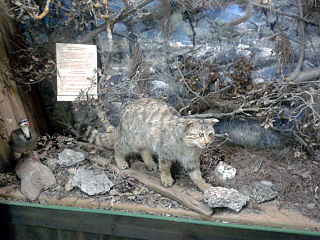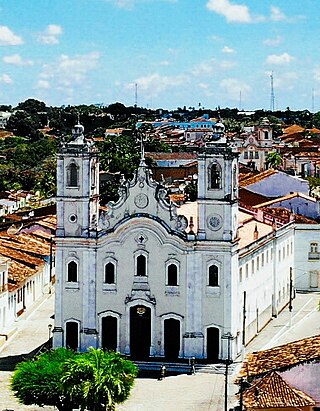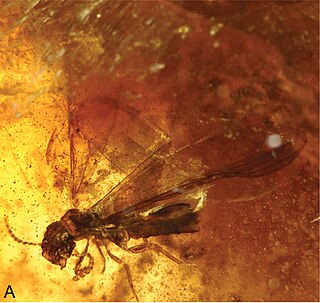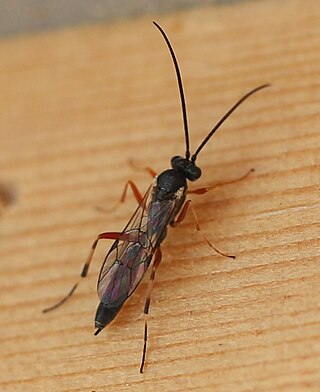
The Cretan wildcat is a member of the genus Felis that inhabits the Greek island of Crete. Its taxonomic status is unclear at present, as some biologists consider it probably introduced, or a European wildcat, or a hybrid between European wildcat and domestic cat. It was previously considered a separate subspecies of wildcat as Felis silvestris cretensis.

The Machilidae are a family of insects belonging to the order Archaeognatha. There are around 450 described species worldwide. These insects are wingless, elongated and more or less cylindrical with a distinctive humped thorax and covered with tiny, close-fitting scales. The colour is usually grey or brown, sometimes intricately patterned. There are three "tails" at the rear of the abdomen: two cerci and a long central epiproct. They have large compound eyes, often meeting at a central point. They resemble the silverfish and the firebrat, which are from a different order, Zygentoma.

Ctenolepisma is a genus of primitive insects in the order Zygentoma, closely related to the silverfish and firebrat but less reliant on human habitation, some species being found both indoors and outdoors and some found exclusively outdoors. The genus is distributed nearly worldwide in warm regions. Australia lacks native Ctenolepisma, but is home to introduced species.

The Archdiocese of São Salvador da Bahia is part of the Roman Catholic Church in Brazil. The Archbishop of São Salvador da Bahia also carries the title Primate of Brazil. The archdiocese is located in the city of Salvador, Bahia.

The Roman Catholic Diocese of Penedo is a diocese located in the city of Penedo in the ecclesiastical province of Maceió in Brazil.

Termitidae is the largest family of termites consisting of 2,105 described species of which are commonly known as the higher termites. They are evolutionarily the most specialised termite group, with their highly compartmentalized hindgut lacking the flagellated protozoans common to "lower termites", which are instead replaced by bacteria and archaea. Whereas lower termites are restricted mostly to woody tissue, higher termites have diverse diets consisting of wood, grass, leaf litter, fungi, lichen, faeces, humus and soil. Around 60% of species rely on soil-feeding alone.

Kalotermitidae is a family of termites, commonly known as drywood termites. Kalotermitidae includes 21 genera and 419 species. The family has a cosmopolitan circumtropical distribution, and is found in functionally arid environments.

Myospila is a genus from the fly family Muscidae.

Neotermes is a genus of termites in the Kalotermitidae family. The genus was first described by Nils Holmgren in 1911, and the type species is Neotermes castaneus. All species are obligate nesters of wood.
Tenuirostritermes is a genus of termites in the family Termitidae. There are about five described species in Tenuirostritermes.
Dolichomitus is a genus of ichneumon wasps in the family Ichneumonidae. There are at least 70 described species in Dolichomitus. The name is derived from the Greek dolicho, meaning long or narrow, and the Greek mitus, meaning a thread.

Stylotermitidae is a family of termites in the order Blattodea. There are two extinct and one extant genera in Stylotermitidae, with more than 50 described species.

Syntermes is a genus of large Neotropical higher termites within the subfamily Syntermitinae. The genus is found only in South America where members are distributed widely throughout the continent, being found from the tropical rainforests of Colombia to the savannas of Brazil and Northern Argentina.

Hyposoter is a large cosmopolitan genus of parasitoid wasps belonging to the family Ichneumonidae.

Dusona is a genus of parasitoid wasps belonging to the family Ichneumonidae. It is the most species rich genus of the subfamily Campopleginae with 442 known species.

Heterotermes is a genus of subterranean termites belonging to the family Rhinotermitidae. The genus has an almost cosmopolitan distribution. One of their closest relatives is the Reticulitermes genus.

Constrictotermes is a genus of Neotropical higher termites within the subfamily Nasutitermitinae. They form large open-air foraging columns from which they travel to and from their sources of food, similar to the Indomalayan species of processionary termites. Species of this genus commonly build epigeal or arboreal nests and feed on a variety of lichens, rotted woods and mosses.














